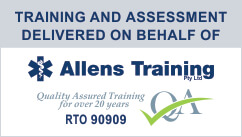Learn to Swim and Prevent Drownings this summer.
On the Beaches and Around the House
Q: What is a rip?
A rip is a seaward-moving water current. After waves have broken and run to the shore, the accumulated water then moves away from the shore through a pathway of least resistance – usually the deepest point. This moving pathway is called a rip.
Q: Where do rips occur?
Rips occur along almost all stretches of beach and in and around rocks, breakwalls or any permanent fixture in the ocean. The larger the waves, the stronger and larger the rips. Most seaward-running rips normally end not far beyond the level of the breaking waves.
Q: What do I do if I get caught in a rip?
Side currents can cause people to be washed off swimming areas where waves break on sandbars. Staying calm is essential. Not swimming directly against the rip is important and strong swimmers only should swim at an angle across the rip. At patrolled beaches it is best to request assistance by raising a straight arm and calling out for help. Floating and conserving energy is important until help arrives.
Struggling against a rip is a quick way to exhaustion and a step closer to panic and tragedy.
Q: Who patrols beaches?
Volunteer lifesavers and professional lifeguards patrol beaches. Some beaches are patrolled by lifeguards all year round.
Professional lifeguards employed by Councils are paid to work 5-7 days each week on the majority of NSW popular beaches. They are recognised as wearing long sleeved white shirts with blue collars and cuffs and the word “LIFEGUARD” in red block letters. In some cases they wear other uniforms such as the red and yellow uniform which is much the same as the volunteer lifesavers.
Q: Do I need to supervise my child in the pool constantly?
YES
Tragically, many drownings happen in the few seconds that parents are distracted. Supervision means your child is being continually watched by you or an appropriate adult.
Supervision should be constant, not the occasional glance whilst you read a book or relax. Regardless of what you are doing, always keep watch when children are in, on or around water. Take your child with you whenever you leave the swimming pool or bathtub. Never under any circumstances leave them alone!
Create a checklist:
- Is your child being supervised?
- Have you emptied the bathtub?
- Is the lid on the nappy bucket?
- Can your child gain access to the pool or spa?
- Have you checked for other water dangers such as open drains, garden ponds, creeks or dams?
Q: Why do I need to learn resuscitation?
A child’s life may be saved if the parents or carers have the proper knowledge and skills to rescue and resuscitate quickly and confidently.
Simple Instruction wants to decrease the the amount of drownings this summer in and around the house and on our beautiful beaches. By following some Simple steps we can ensure our whole family is always safe. I know it can sound very childish but the message Kids Alive – Do the Five! is a great message that every Australian and tourist should adhere to. The message is Simple:
1. Fence the pool
2. Shut the gate
3. Teach your kids to swim – it’s great
4. Supervise – watch your mate and
5. Learn how to resuscitate
Simple Instruction can’t help you with the first four points above but we can help you with number 5. Learn How to resuscitate. So come along to either our Apply First Aid course ($110-$115) or our Perform CPR course ($45) held at the Brookvale Hotel / Pub and you can learn the skills that may save a family members life.
